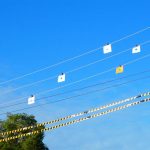August 17, 2012
Queensland scientists are reviewing past cases of Hendra virus to better understand why some horses become infected and others don’t.
Biosecurity Queensland researcher Dr Hume Field said the common factor in most cases was horses resting under trees where flying foxes were active.
“On more than 80 per cent of properties where there were Hendra virus cases, horses ‘camped’ under trees that flying foxes were feeding in,” Dr Field said.
“This reinforces the importance of Biosecurity Queensland advice about stopping horse access to fruiting and flowering trees that may attract flying foxes.”
Dr Field said the Queensland Centre for Emerging Infectious Diseases was analysing data from properties in Queensland and northern NSW where a cluster of Hendra virus cases occurred in 2011 and 2012 to look for patterns.
“QCEID scientists are using profiling to identify characteristics common to affected properties,” he said.
“We gather information on local flying fox activity on and around the property, on horse characteristics and behaviour, and on horse husbandry practices.
“By talking with the property owner, and walking around the property we can often identify the potential ‘ground zero’ for flying foxes and horses coming into contact.”
Dr Field said early findings from the 2011 cases showed quite a clear picture of potential interaction.
“Almost 90 per cent of properties showed evidence of recent flying fox activity, including food debris and urine or faeces under trees, and on more than 80 per cent of properties, horses camped under trees that flying foxes were feeding in,” he said.
“We are also looking at pasture abundance and quality but we’re not seeing a direct relationship with Hendra virus risk.
“Even when pasture was poor, horses were generally in good condition because of supplementary feeding, so poor nutrition or hunger don’t appear to be risk factors.
“However, we are continuing to explore whether a horse’s natural inquisitiveness or desire for ‘green pick’ in short pasture may increase the risk of eating contaminated material.”























